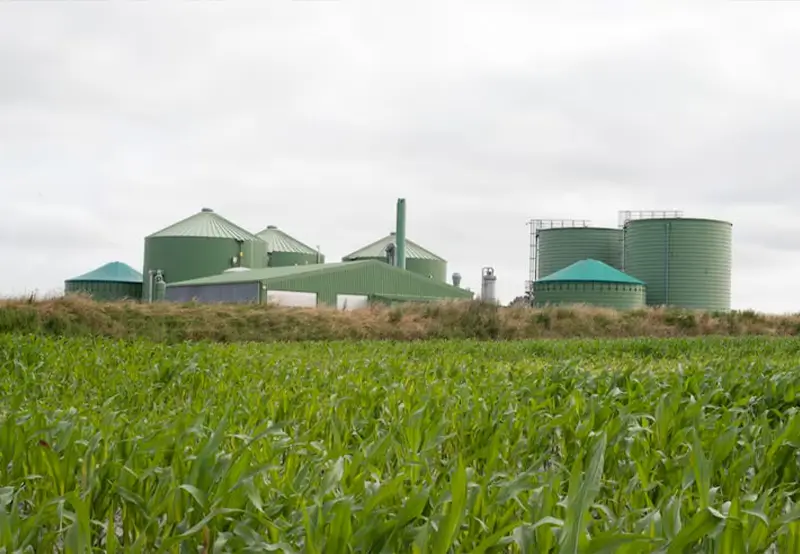Ethanol: A Powerful Solution to Reduce Carbon Emissions and Combat Climate Change

Introduction
Carbon emissions, primarily from the burning of fossil fuels, have become a critical issue facing the world today. The buildup of carbon dioxide (CO2) in the atmosphere contributes to global warming, leading to extreme weather conditions, rising sea levels, and habitat destruction. As the need for sustainable energy solutions intensifies, the search for alternatives to traditional fuels has gained significant momentum. Ethanol, a renewable fuel derived from plant materials, has emerged as a powerful solution to mitigate carbon emissions and combat climate change. With its increasing popularity as an eco-friendly alternative to gasoline, ethanol plays an important role in the transition to cleaner energy systems.
What is Ethanol?
Ethanol is an alcohol-based fuel produced from renewable sources like corn, sugarcane, and biomass. It is widely used in the transportation and industrial sectors, especially when blended with gasoline. As an alternative fuel, ethanol can be made through fermentation, where sugars in plant materials are converted into ethanol through the action of yeast or bacteria. The most common sources for ethanol production include crops such as corn in the United States and sugarcane in Brazil, with some progress being made in the development of cellulosic ethanol, which uses non-food biomass.
Ethanol is already widely integrated into the transportation sector, often mixed with gasoline to create ethanol-blended fuels such as E10 (10% ethanol and 90% gasoline) and E85 (85% ethanol and 15% gasoline). It can also be used in industrial applications to power machinery and for the production of various chemical products. With its renewable nature and ability to reduce dependency on fossil fuels, ethanol stands out as a viable alternative fuel for a sustainable future.
How Ethanol Reduces Carbon Emissions
One of the most significant advantages of ethanol is its ability to reduce carbon emissions compared to conventional gasoline. Ethanol, when blended with gasoline, produces fewer greenhouse gases, especially carbon dioxide (CO2). The key factor here lies in the carbon neutrality of ethanol.
When ethanol is burned as fuel, it releases CO2 into the atmosphere. However, the plants used to produce ethanol, such as corn or sugarcane, absorb CO2 during their growth. This process essentially makes ethanol carbon neutral, as the CO2 emitted during combustion is offset by the CO2 captured by the plants during their lifecycle. A lifecycle analysis of ethanol reveals that, compared to traditional gasoline, ethanol has a much lower carbon footprint.
Research studies have shown that ethanol can reduce CO2 emissions by as much as 30% to 50% depending on factors such as the type of feedstock used, production methods, and transportation. When produced from cellulosic materials or waste biomass, ethanol can have an even lower carbon footprint, contributing further to the reduction of net emissions.
Ethanol in the Renewable Energy Landscape
Ethanol plays a crucial role in the broader context of renewable energy. As the world seeks to reduce its reliance on fossil fuels and mitigate the impacts of climate change, ethanol has emerged as a clean, renewable alternative. Governments around the world are introducing policies and providing incentives to support the production and use of ethanol. For instance, in the United States, the Renewable Fuel Standard (RFS) mandates the blending of renewable fuels like ethanol with gasoline, fostering the growth of the ethanol industry.
In many countries, ethanol is not just seen as an alternative fuel but also as a crucial element of the energy transition towards a sustainable future. This has been further supported by international agreements, such as the Paris Agreement, which push for the reduction of greenhouse gas emissions and the adoption of cleaner energy sources. Ethanol, with its renewable production cycle and ability to reduce fossil fuel dependence, fits perfectly within this global strategy.
Benefits of Ethanol Beyond Carbon Emission Reduction
While reducing carbon emissions is the most prominent benefit of ethanol, it offers a range of additional advantages. One of the most compelling benefits is energy security. By diversifying the sources of fuel, ethanol reduces the dependence on oil imports, making countries less vulnerable to fluctuations in global oil prices and geopolitical instability.
Ethanol also brings economic benefits. The production and use of ethanol create jobs in agriculture, manufacturing, and distribution. It supports farmers by providing an additional market for crops like corn and sugarcane, helping to boost the agricultural sector. Furthermore, advances in ethanol production technology have made it more efficient and sustainable, ensuring that it remains a competitive energy source for the future.
Additionally, ethanol’s use in transportation has been linked to cleaner air and better public health outcomes. By reducing harmful emissions like nitrogen oxides (NOx) and particulate matter, ethanol-blended fuels can improve air quality, particularly in urban areas with high vehicle traffic.
Challenges and Limitations
Despite its many benefits, the widespread adoption of ethanol faces several challenges. One of the primary concerns is land use. The production of ethanol from crops like corn or sugarcane requires large amounts of land and water. Critics argue that using food crops for fuel production can lead to food insecurity, especially in regions where crop yields are already stretched to meet population demands.
Moreover, ethanol production still relies on energy-intensive processes that could impact its overall sustainability. While advancements in technology are helping to make ethanol production more efficient, challenges related to feedstock availability, energy consumption, and production costs remain.
The infrastructure for ethanol distribution and storage also presents a barrier to widespread adoption. Many existing fuel stations and vehicle engines are not optimized for ethanol, especially higher blends like E85. Expanding infrastructure and modifying engines to handle ethanol blends will be key to ensuring that ethanol can be used more widely and efficiently.
Ongoing research is focused on overcoming these challenges. The development of advanced biofuels, such as cellulosic ethanol, which can be produced from non-food biomass like wood chips or agricultural waste, has the potential to reduce the pressure on food supply chains and land use. In addition, innovations in fermentation technology, genetic engineering, and plant breeding could help make ethanol production more efficient and sustainable.
Future of Ethanol and Carbon Emission Reduction
The future of ethanol as an alternative fuel looks promising, particularly in the context of the global drive towards carbon-neutral energy solutions. As countries commit to reducing their carbon emissions and mitigating climate change, ethanol has the potential to play a significant role in achieving these goals. Bioethanol, in particular, holds promise for addressing the carbon challenge, as it is produced from renewable resources and has a significantly lower carbon footprint than fossil fuels.
The growth of bioethanol, especially from advanced feedstocks like algae or agricultural waste, will be crucial in ensuring that ethanol can contribute to long-term carbon reduction goals. As technological advancements continue, ethanol’s energy efficiency is expected to improve, making it an even more attractive option for sustainable transportation and energy production.
With ongoing support from governments, investments in infrastructure, and breakthroughs in production methods, ethanol is set to play an increasingly important role in reducing carbon emissions and promoting a sustainable energy future.
Conclusion
In conclusion, ethanol represents a powerful solution for reducing carbon emissions and combating climate change. With its ability to reduce greenhouse gas emissions compared to traditional gasoline, ethanol is a key player in the global shift toward renewable energy. Beyond carbon emission reduction, ethanol offers numerous benefits, including energy security, job creation, and agricultural support. While challenges remain, ongoing research and technological advances promise to make ethanol more efficient and sustainable. The future of ethanol as a key element of a carbon-neutral energy system is bright, and its role in the fight against climate change is crucial.
FAQs
1. How does ethanol contribute to energy security?
Ethanol helps reduce dependency on imported fossil fuels, improving energy security. It provides a domestically produced renewable energy source, reducing vulnerability to global oil price fluctuations and geopolitical instability.
2. What is bioethanol?
Bioethanol is ethanol produced from biomass, which includes plant materials like corn, sugarcane, and agricultural waste. It is considered a renewable and more sustainable form of ethanol compared to conventional fossil fuels.
3. How is ethanol made?
Ethanol is made through a process called fermentation, where sugars from crops like corn or sugarcane are converted into ethanol by yeast or bacteria. The resulting ethanol is then refined and blended with gasoline for use in vehicles and industrial applications.
4. Are there government incentives for using ethanol?
Yes, many governments worldwide offer policies and incentives to support the production and use of ethanol. These incentives often include subsidies, tax breaks, and blending mandates that encourage the use of renewable fuels like ethanol.
5. What are the benefits of using ethanol in transportation?
Using ethanol in transportation helps reduce carbon emissions, improve air quality, and promote sustainable energy use. Ethanol-blended fuels like E10 and E85 are already widely available, and using them can help reduce dependence on fossil fuels.











